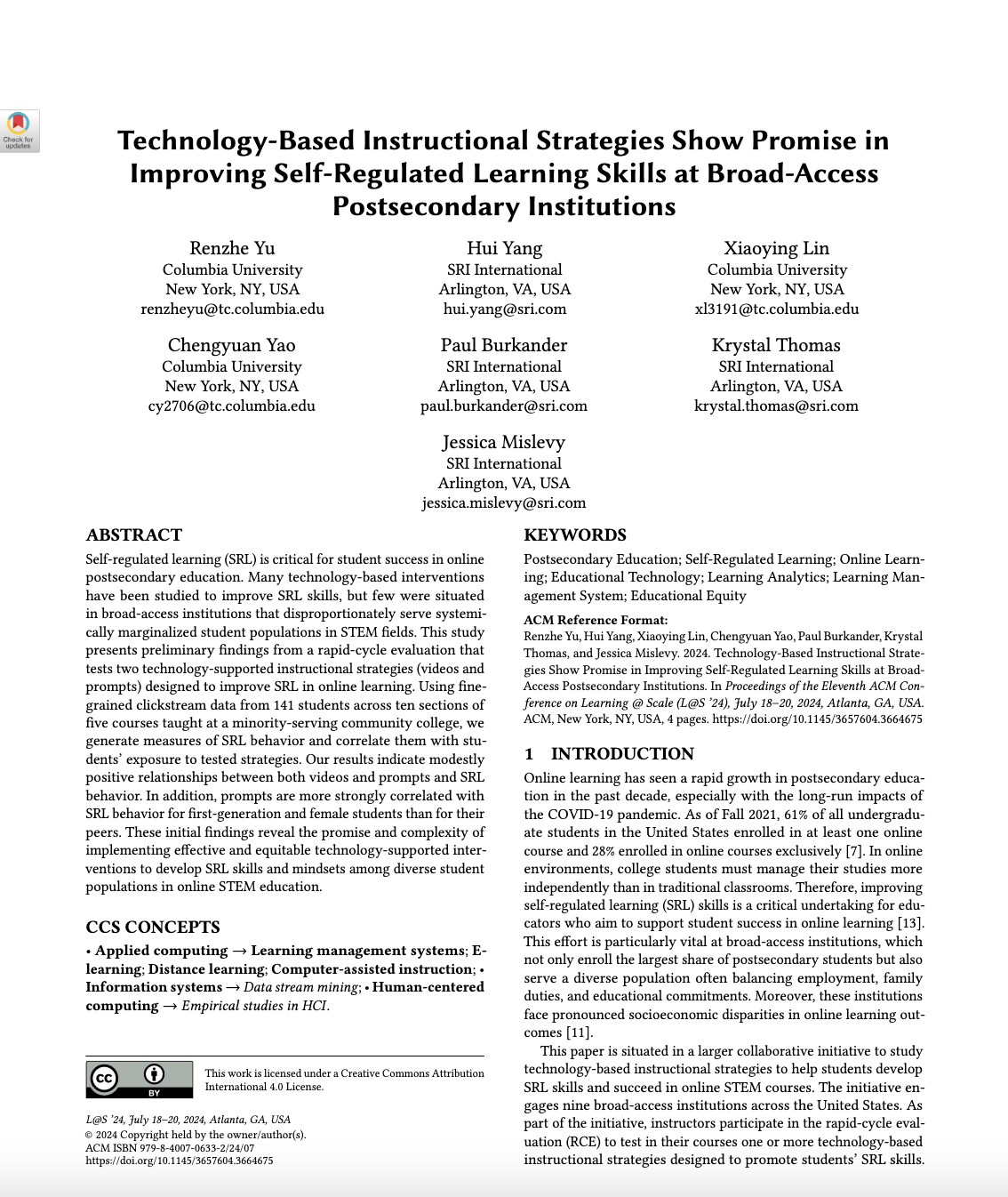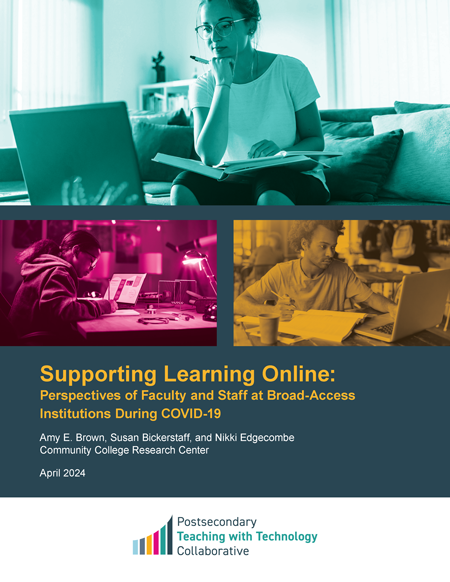Self-regulated learning (SRL) is critical for student success in online postsecondary education. Many technology-based interventions have been studied to improve SRL skills, but few were situated in broad-access institutions that disproportionately serve systemically marginalized student populations in STEM fields.
This Postsecondary Teaching with Technology Collaborative brief discusses some of the challenges with online teaching reported by STEM instructors, describes a self-directed learning (SDL) framework to address these challenges, and highlights support strategies that can be integrated into teaching practices.
The COVID-19 pandemic gave college faculty and instructional support staff a crash course in online teaching and course design. Educators and students alike discovered certain benefits of online courses, but the shift to “online all the time” bore out the warning in past research that online learning—particularly asynchronous, self-paced courses that lack live interaction between faculty and students—puts more demands on students to manage their own learning and is associated with lower pass rates. The shift also revealed that many faculty have not been adequately prepared for the challenges of teaching and learning online, and that faculty often lack access to resources and institutional support for using technology effectively to foster student learning.




